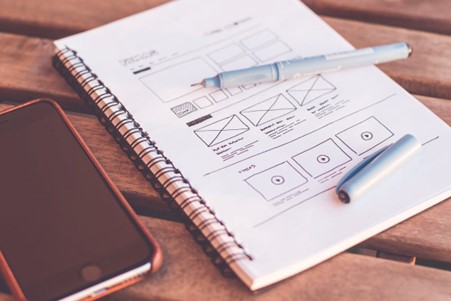Why Prototyping is an Important Part of the Design Process
Prototyping is a critical part of the design process that allows designers to test ideas, gather feedback, and iterate before investing too many resources into a concept. A prototype is an early sample, model, or release of a product that is used to evaluate the design. Prototyping serves several important purposes. These include:
Table of Contents
Validating Requirements
A prototype allows designers and stakeholders to actually experience a product concept rather than just imagine or describe it. This hands-on experience validates whether the prototype meets the project requirements and user needs. By prototyping early in the process, using tools like sketch templates, teams can test assumptions, identify issues, and adapt the design direction if necessary. Catching requirement mismatches this early prevents wasted effort from implementing a concept that will not work for the user or solve the business need.
Testing Functionality
Interacting with a prototype enables testing of the functionality and user experience. Does the design provide the needed features and capabilities? Are the interaction flows and user interface intuitive or confusing? Prototyping highlights technical and usability flaws that need refinement as well as overall gaps where additional functionality may be necessary.
Gathering Feedback
Prototypes provide the ideal artifact for gathering feedback from users and stakeholders. Rather than asking people to react to abstract descriptions and static images, you can place something tangible in their hands that brings the concept to life. The prototype grounds the conversation and focuses feedback. Allowing others to experience and critique the design results in more meaningful, actionable feedback that can then inform design improvements.
Communicating Intent
Prototypes are also extremely useful for communicating the vision to people not actively involved in the design process, such as leadership or marketing teams. Demonstrating a prototype helps convey functionality and usability much better than wireframes or written/verbal explanations. The hands-on experience facilitates understanding by showing rather than telling people what you intend to build.
Testing Feasibility
For products involving complicated engineering and manufacturing considerations, physical prototypes test technical and production feasibility. Can the mechanics, electronics, and materials function as expected? Are there manufacturability issues with the chosen design direction? Building out form, scale, and details uncovers hidden challenges in constructing the product.
Reducing Risk
Prototyping reduces risk by revealing problems early when they can still be readily addressed, rather than after launching an expensive final product. It provides insurance against executing the design only to find issues when it’s too late to change course easily. Investing early in prototyping minimizes the chance of costly rework downstream.
Informing Estimates
The prototyping process also provides greater clarity about the effort, resources, and timeline required to build the final product. Creating a prototype requires going through many detailed design decisions and technical considerations, which yields more accurate estimates as unknowns are reduced.
The hands-on, experiential nature of prototyping makes it invaluable for testing ideas, gathering feedback, and illuminating issues early when they are easiest to fix. Prototyping provides crucial learning that ensures designs are feasible and aligned with important requirements before significant time and money are invested in launching a product. It reduces project risk and increases the chances of successful outcomes. In an efficient design process, prototyping is not an optional extra, but an indispensable activity.


